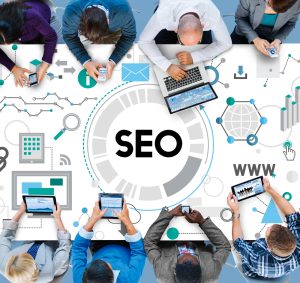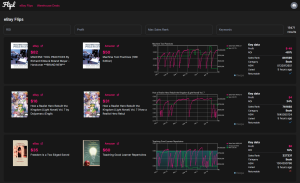In recent years, sustainable branding has evolved from a niche concept to a mainstream necessity. As consumers become more environmentally conscious, brands are increasingly expected to align their messaging and values with eco-friendly practices. One key aspect of this shift is logo design, where companies are adopting greener, more responsible approaches. An eco-friendly logo isn’t just a visual symbol—it’s a powerful tool that communicates a brand’s commitment to sustainability.
Designing logos with sustainability in mind not only supports a brand’s eco-conscious image but also helps to build trust with a growing segment of consumers who prioritize ethical and environmental considerations. By focusing on eco-friendly principles in logo design, brands can enhance their reputation, foster loyalty, and connect with audiences who are actively seeking sustainable products and services. This article explores the importance of eco-friendly logos and highlights the key trends and elements that are shaping sustainable branding.
Why eco-friendly logos are crucial for modern brands
The demand for sustainability is growing, and it’s becoming an essential factor in consumer decision-making. Brands that embrace eco-friendly practices are gaining an edge in competitive markets, particularly as consumers become more aware of environmental issues. As a result, logos are increasingly being used as a tool to communicate sustainability, conveying to customers that a brand is mindful of its ecological impact.
For companies seeking to embed such values into their visual identity, consulting with experts who understand the nuances of sustainable branding can be invaluable. For instance, working with a Design Agency London that has experience in crafting environmentally conscious designs can help ensure that an eco-friendly logo is not just about aesthetics—it’s about building credibility. When a brand uses a logo that incorporates sustainable design elements, it sends a message that the company is aligned with environmental values. This, in turn, enhances consumer trust, especially as more people actively seek brands that demonstrate responsibility towards the planet. Furthermore, an eco-friendly logo can differentiate a company in crowded markets, making it stand out as a forward-thinking, responsible choice.
Key elements of eco-friendly logo design
Eco-friendly logos share certain characteristics that align with sustainable principles. These design elements ensure that the logo is not only visually appealing but also sends the right message about a brand’s commitment to the environment. Here are the core components of eco-friendly logo design:
- Simplicity: A simple, clean design is often more effective in conveying an eco-friendly message. The minimalist approach reduces unnecessary complexity and avoids wasting design resources. It also reflects the idea of sustainability—cutting out excess and focusing on what matters most.
- Nature-inspired colors: Eco-friendly logos often feature earth tones like greens, browns, and blues, which evoke feelings of nature, tranquility, and sustainability. These colors have universal associations with the environment and are often used to communicate a brand’s eco-consciousness.
- Organic shapes: Logos that feature fluid, natural shapes such as leaves, waves, or trees have a direct connection to nature. These shapes help reinforce the sustainable message and create a sense of harmony with the planet.
- Recyclable or sustainable materials: If the logo is used in physical branding materials, choosing sustainable production methods and materials—such as recycled paper, soy-based inks, or biodegradable packaging—further emphasizes the brand’s commitment to the environment.
By integrating these elements, brands can create logos that reflect their eco-conscious values while remaining visually impactful and memorable. These design features speak directly to environmentally aware consumers and can help establish a brand’s identity as a sustainability leader.
Popular eco-friendly design trends in logos for 2025
As sustainability continues to shape the branding landscape, eco-friendly logo design trends evolve in response to both consumer preferences and broader environmental concerns. Several design trends are gaining traction in 2025, driven by a desire for authenticity, simplicity, and natural aesthetics.
One major trend is minimalism, where logos are designed with fewer elements, clean lines, and open spaces. This style mirrors the values of sustainability by focusing on essential elements and eliminating unnecessary clutter. Another significant trend is the use of hand-drawn elements, which convey a sense of authenticity and craftsmanship. These logos feel organic and personal, reflecting the idea that the brand cares about the environment and local craftsmanship.
Nature-based color palettes are also becoming more prominent. Soft greens, earthy browns, and calming blues are often paired to evoke a sense of environmental awareness. Additionally, there is a growing use of geometric shapes and organic forms, where elements of nature—like leaves, plants, and trees—are represented through simple, stylized shapes. These logos blend modern design with eco-conscious symbolism, creating a harmonious balance between form and function. As a tool, Turbo Logo allows designers to experiment with these trends, integrating nature-inspired elements into modern branding effortlessly.
These trends are not just about following fashion; they reflect a deeper commitment to sustainability and environmental responsibility. They enable brands to visually communicate their eco-friendly values while maintaining a contemporary and relevant image.
The role of typography in sustainable branding
Typography is another critical element of sustainable logo design. Just like color and shapes, the typeface used in a logo can play a significant role in communicating the brand’s eco-friendly message. Sustainable typography often features clean, modern fonts that are easy to read and feel organic in appearance.
For instance, serif fonts with soft curves or rounded sans-serif fonts are often used in eco-friendly branding because they evoke a sense of approachability and warmth. These fonts can also appear more natural and grounded, which aligns with the idea of sustainability. On the other hand, custom typefaces that are hand-drawn or inspired by natural elements can further strengthen the connection to the environment, making the brand feel more authentic and rooted in nature.
The key is to choose fonts that are legible, modern, and resonate with the values of sustainability. Overly complex or artificial-looking fonts can undermine the organic and natural qualities that eco-friendly logos aim to represent.
Challenges in creating eco-friendly logos and how to overcome them
While designing an eco-friendly logo presents many opportunities, it also comes with its share of challenges. One common issue is avoiding cliché designs. Because eco-friendly logos often rely on nature-related elements like leaves, trees, or earth tones, it can be difficult to create something unique without resorting to overused symbols. It’s important for designers to think creatively and develop new, innovative ways to communicate sustainability without relying on visual clichés.
Another challenge is ensuring that the logo still represents the brand’s core identity. In some cases, companies may be hesitant to make significant changes to their existing logos, fearing that they might alienate loyal customers. To overcome this, designers must find a way to incorporate eco-friendly elements without compromising the brand’s essence. This can be done by subtly integrating sustainable features or by creating a more flexible logo system that allows for variations across different applications.
Finally, balancing simplicity with effectiveness can be a tricky task. While minimalist logos are ideal for eco-friendly branding, they must still be distinctive and memorable. Striking the right balance between clean design and unique visual identity requires careful thought and attention to detail.
Q&A: Addressing common questions about sustainable logo design
What are the key characteristics of an eco-friendly logo?
An eco-friendly logo typically features simple, clean design elements, nature-inspired colors, and organic shapes. It often incorporates sustainable materials or eco-conscious production methods and is designed to communicate the brand’s commitment to environmental responsibility.
How can I make my brand’s logo more sustainable without sacrificing its design appeal?
You can make your logo more sustainable by opting for minimalist designs, using nature-based color palettes, and selecting typography that feels organic. Additionally, consider how the logo will be produced—using recyclable or biodegradable materials can reinforce the brand’s eco-friendly message.
Is it necessary to completely overhaul a logo to make it more eco-friendly, or can small changes be effective?
Small changes can be highly effective in making a logo more eco-friendly. Even subtle updates, such as adjusting the color palette to include more earth tones or simplifying the design, can signal a commitment to sustainability without needing a full redesign.
Conclusion
Sustainable branding is no longer just a trend but a key element of modern business strategy. As consumers continue to prioritize eco-conscious companies, designing an eco-friendly logo has become an essential way to connect with them. By embracing minimalist design, using nature-inspired colors, and focusing on authenticity, brands can communicate their commitment to sustainability effectively. As we move into 2025, eco-friendly logo design will play a critical role in shaping the future of branding, helping companies build trust, loyalty, and a positive reputation with environmentally-conscious audiences.
This article was prepared by the experts at Turbologo.








